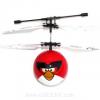- 11 replies
- 1,808 views
- Add Reply
- 0 replies
- 1,109 views
- Add Reply
- 6 replies
- 5,086 views
- Add Reply
- 8 replies
- 2,198 views
- Add Reply
- 14 replies
- 6,491 views
- Add Reply
Req : DSM (Digital Surface Model) Generated from satellite imagery

By intertronic,
Hi everyone,
does anyone knows how to generate a digital surface model with some satellite imagery? it's possible to create a terrain from stereo imagery in ArcGIS? and with just f.ex. 3-5 images not stereo?
References :
https://en.wikipedia.org/wiki/Digital_elevation_model
Graphs with values in maps and multiple attribute information:
By veegee,
Dear friends,
I have two data sets; 1). village information of water quality analysis 2). animal farming details(breeds of animals- like Chicken, Hen, Cattles)
Requirement:
i). Put graphs with values (histogram/bar chart) in the maps.
ii). Multiple attribute information for animals details for each village.
Need clarifications for the following:
1. For bar chart/ histogram is it possible to put the values on the graph on respective administrative boundary?
2. Is it possi
Free Erdas Imagine Spatial Modeler Library

By darksabersan,

Hi guys,
I found some interesting Free Erdas Imagine Spatial Modeler Library provided by Sterling Geo.
The models have been donated by Sterling Geo employees. They are free to download and use.
Index
Raster Buffer Around a Binary Image
Active Fire Detection Using SWIR and NIR Band
Sentinel-2 Cloud Removal Model
Sentinel-2 NDVI Model
Sentinel GRD 8-bit Colour Polarimetric Model
Using ERDAS IMAGINE to Import .asc Files
Importing MODIS with NDVI Rescale
Categorised NDVI
Raster to
Correcting a DEM along a River or Channel
By ransara,
Dear Friends,
I need help to correct a DEM along the streams. When I make a DEM with Contours, generally steps are creating along the streams. This is not correct for flood plain simulations. I tried with both Triangulation and raster options. Unfortunately I can't paste a photo here. I think my point is clear.
Can someone advice me how to correct this ? My study area is big and so many streams.
How import Sentinel-2A bands in Erdas Imagine

By imtest133,
Dear all
I need to Import sentinel-2A bands in Erdas Imagine.
I can see bands in SNAP desktop but i don't know how import these bands in Erdas.
Thanks
-
Forum Statistics
8.7k
Total Topics43.4k
Total Posts






